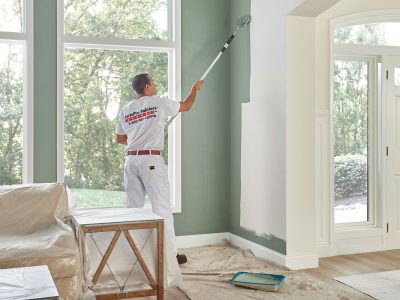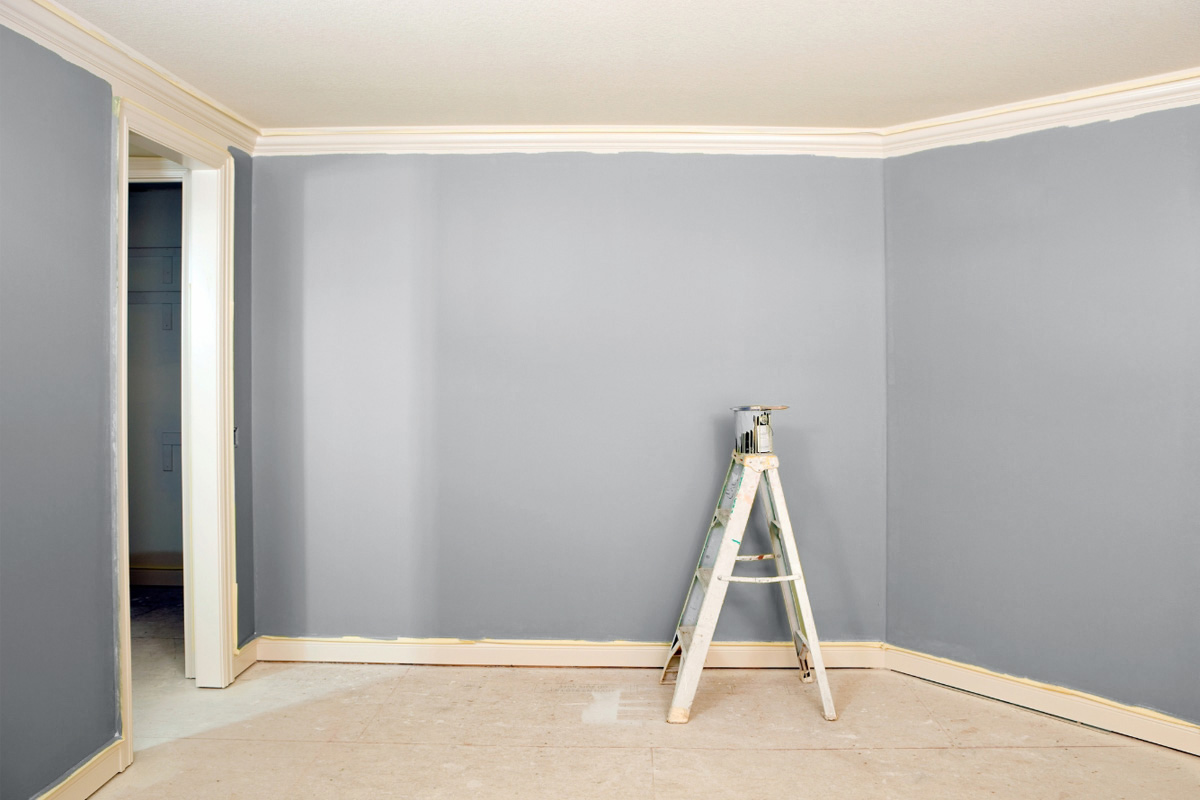Enhance Your Inside Design With Comprehensive Color Appointment
The assimilation of color examination right into interior decoration presents a distinct opportunity to improve and elevate the psychological and aesthetic vibration of a room. By engaging with an experienced color consultant, you can navigate the complexities of shade option, making sure that your choices not just enhance building attributes but also reverberate with individual design and mental influence. This critical partnership can substantially influence the general environment of your environment, promoting a sense of consistency and function. Understanding the nuances of this process is essential-- what vital elements should be considered to attain ideal outcomes?
Advantages of Shade Consultation

Moreover, shade examination aids in optimizing all-natural light and optimizing spatial perception. Lighter shades can make a room appear more large, while darker shades produce an intimate setup. Cleveland Metro Painting Specialists. This critical application of shade can considerably influence the overall setting of any kind of indoor room
In addition, professional specialists possess a thorough understanding of current fads and classic classics, ensuring that the chosen shades will stay attractive over time. This foresight can conserve clients from expensive redesigns in the future. Finally, color appointment encourages customers by providing them with a clear vision and instructions, cultivating confidence in their design selections and ultimately causing an extra successful and gratifying indoor style outcome.
Recognizing Color Psychology
The importance of color psychology in interior decoration can not be overstated, as it explores the mental and emotional results that different colors can evoke in people. Colors can influence mood, actions, and even efficiency, making them an important consideration in any kind of design task.
For example, cozy colors such as red, orange, and yellow are usually connected with power and warmth. They can boost feelings of exhilaration and comfort, making them appropriate for social spaces like living spaces or kitchen areas. On the other hand, amazing shades like blue, eco-friendly, and purple often tend to stimulate calmness and peace, making them perfect for bed rooms or meditation locations.
Furthermore, the use of neutral tones can create a well balanced setting by enabling the bolder colors to stick out without overwhelming the senses. Understanding these psychological influences makes it possible for developers to develop rooms that not just look visually pleasing yet additionally advertise psychological health.
Incorporating shade psychology into interior layout entails a thoughtful option of shades customized to the intended function of each room, eventually improving the total experience for its passengers. This recognition is essential for accomplishing a useful and unified interior environment.
The Shade Wheel Explained
Understanding the partnerships in between hues is vital for effective interior decoration, and the color wheel functions as a valuable device in this procedure. The shade wheel, established by Isaac Newton in the 17th century, illustrates the range of colors prepared in a circular format. It comprises primary shades-- red, blue, and yellow-- that can not be created by blending other colors. Secondary shades, created by incorporating primaries, include environment-friendly, orange, and purple. Tertiary shades arise from blending a primary and an additional shade, leading to shades such as red-orange and blue-green.
The shade wheel assists developers grasp the partnerships in between shades, including complementary, comparable, and triadic systems. Corresponding colors, located opposite each other on the wheel, create lively contrasts that can stimulate a space.
Using the shade wheel in indoor design not only boosts visual appeal but also stimulates particular emotions and environments, making it a crucial recommendation for shade consultation. Understanding these connections inevitably empowers designers to produce rooms that are both visually fascinating and functional.
Choosing the Right Scheme
Typically, choosing the appropriate palette is a crucial consider accomplishing an effective indoor layout project. A well-chosen color design can combine a room, boost its features, and stimulate preferred feelings. To begin, consider the function of the space. Different areas offer varied features and require palettes that mirror their desired use; as an example, tranquil shades such as soft blues or greens function well in bedrooms, advertising leisure.
Light can considerably modify how shades appear, so it is important to evaluate the space at different times of the day. An unified palette needs to match these functions, developing a natural look throughout the space.
When choosing shades, use the 60-30-10 guideline, which recommends that 60% of the area should be a dominant shade, 30% a second shade, and 10% an accent shade. This ratio ensures equilibrium and aesthetic rate of interest (Cleveland Metro you could check here Painting Specialists). Ultimately, example colors on the walls before committing, as this allows you to see just how the colors engage with each other and the general setting they produce in your interior design job.
Collaborating With a Shade Specialist

When working with a color professional, the procedure commonly begins with an initial examination. During this conference, you'll discuss your vision, preferences, and browse this site the existing elements in your room. The professional will examine your needs and may recommend specific shade combinations that line up with your goals.
After establishing a direction, the expert will certainly provide samples and aesthetic help to help you visualize the suggested color design. This action is important, as colors can appear differently under differing lights conditions.
In addition, a shade consultant can assist you in choosing complementary home furnishings, art work, and devices to integrate with your picked scheme. By working together carefully, you can attain a polished visual that boosts your insides and develops a welcoming ambience. Inevitably, the competence of a color professional can substantially improve the general effect of your layout project.
Final Thought
In recap, detailed color appointment works as an essential device for boosting indoor layout. By leveraging expert expertise of color psychology and spatial characteristics, a learn the facts here now tailored color combination can be developed to stimulate certain feelings and develop a harmonious atmosphere. This critical strategy not just cultivates a natural layout narrative yet likewise mitigates the threat of expensive redesigns. Ultimately, engaging with a shade expert guarantees an educated and visually pleasing result, elevating the general experience of the area.
By engaging with an experienced shade professional, you can navigate the complexities of color selection, ensuring that your options not just enhance architectural functions however additionally resonate with individual style and psychological influence. It comprises key shades-- red, blue, and yellow-- that can not be produced by mixing various other colors.The shade wheel helps designers comprehend the connections in between shades, including complementary, analogous, and triadic plans.When selecting shades, make use of the 60-30-10 regulation, which suggests that 60% of the space should be a leading color, 30% a secondary shade, and 10% an accent shade. By leveraging specialist knowledge of shade psychology and spatial dynamics, a tailored shade scheme can be developed to stimulate specific feelings and develop a harmonious atmosphere.